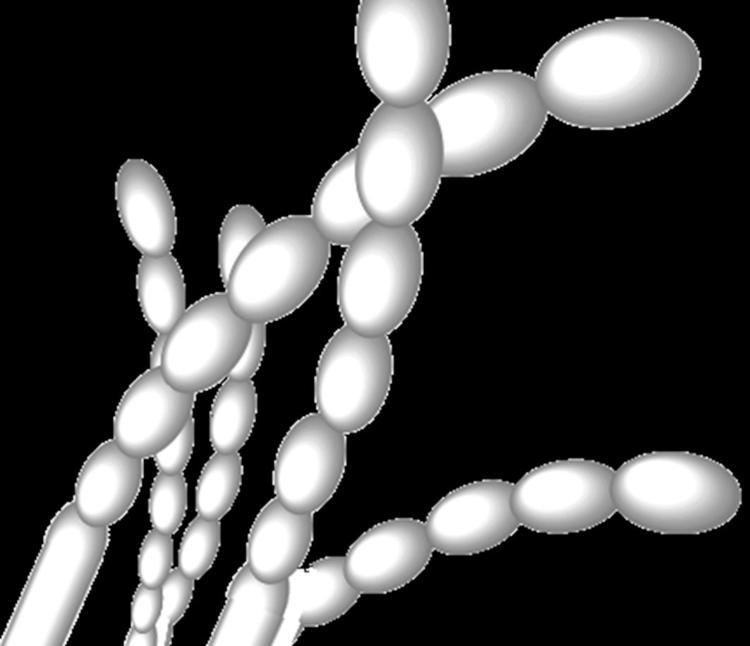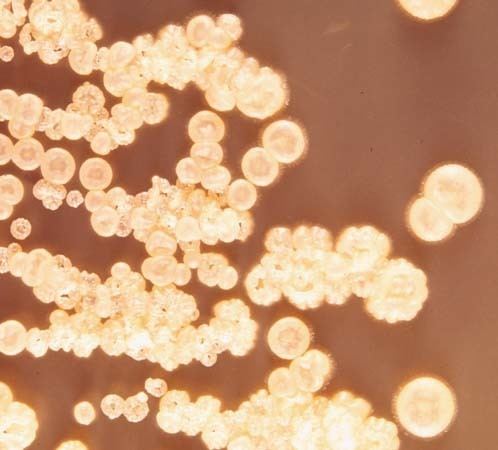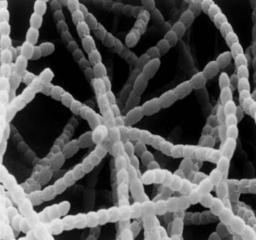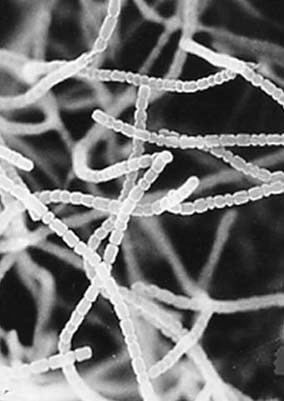Order Actinomycetales | Scientific name Streptomyces griseus | |
 | ||
Similar Streptomyces, Bacteria, Streptomyces coelicolor, High GC gram+, Streptomyces venezuelae | ||
Streptomyces griseus is a species of bacteria in the genus Streptomyces commonly found in soil. A few strains have been also reported from deep-sea sediments. It is a Gram positive bacterium with high GC content. Along with most other streptomycetes, S. griseus strains are well known producers of antibiotics and other such commercially significant secondary metabolites. These strains are known to be producers of 32 different structural types of bioactive compounds. Streptomycin, the first antibiotic ever reported from a bacterium comes from strains of S. griseus. Recently, the whole genome sequence of one of its strains had been completed.
Contents

The taxonomic history of S. griseus and its phylogenetically related strains has been turbulent. S. griseus was first described in 1914 by Krainsky, who called the species Actinomyces griseus. The name was changed in 1948 by Waksman and Henrici to S. griseus. The interest in these strains stems from their ability to produce streptomycin, a compound which demonstrated significant bactericidal activity against organisms such as Yersinia pestis (the causative agent of plague) and Mycobacterium tuberculosis (the causative agent of tuberculosis). Streptomycin was discovered in the laboratory of Selman Waksman, although his PhD student Albert Schatz did probably do most of the work on these strains of bacteria and the antibiotic they produce.

Taxonomy

Streptomyces is the largest genus of the Actinobacteria and is the type genus of the family Streptomycetaceae. These are Gram positive bacteria with high GC content and are characterised by a complex secondary metabolism. They produce over two-thirds of the clinically useful antibiotics of natural origin. Streptomycetes are found predominantly in soil and in decaying vegetation, and most produce spores. Streptomycetes are noted for their distinct "earthy" odor which results from production of a volatile metabolite, geosmin.

Like other streptomycetes, S. griseus has a high GC content in its genome, with an average of 72.2%. The species was first classified within the genus Streptomyces by Waksman and Henrici in 1948. The taxonomy of S. griseus and its evolutionarily related strains have been a considerable source of confusion for microbial systematists. 16S rRNA gene sequence data have been used to recognise the related strains, and are called S. griseus 16S rRNA gene clade. The strains of this clade have homogeneous phenotypic properties but show substantial genotypic heterogenecity based on genomic data. Several attempts are still made to solve this issue using techniques such as DNA:DNA homology and multilocus sequence typing. A whole genome sequence was recently carried out on the IFO 13350 strain of S. griseus.
Physiology and morphology

S. griseus and its related strains have recently been shown to be alkaliphilic, i.e., they grow best at alkaline pH values. Although these organisms grow in a wide pH range (from 5 to 11), they show a growth optimum at pH 9. They produce grey spore masses and grey-yellow reverse pigments when they grow as colonies. The spores have smooth surfaces and are arranged as straight chains.
Ecology
Streptomyces griseus strains have been isolated from various ecologies, including stell waste tips, rhizosphere, deep sea sediments and coastal beach and dune sand systems. Recent studies have indicated the strains of S. griseus might be undergoing ecology-specific evolution, giving rise to genetic variation with the specific ecology, termed ecovars.
Antibiotic production
Interest in the genus Streptomyces for antibiotics came after the discovery of the antibiotic streptomycin in a S. griseus strain in 1943. The discovery of streptomycin, an antituberculosis antibiotic, earned Waksman the Nobel Prize in 1952. The award was not without controversy, since it excluded the nomination of Albert Schatz, who is now recognized as one of the major co-inventors of streptomycin. The strains of this species are now known to be rich sources of antibiotics and to produce 32 different structural types of commercially significant secondary metabolites. Furthermore, the genomic studies have revealed a single strain of S. griseus IFO 13350 has the capacity to produce 34 different secondary metabolites.
